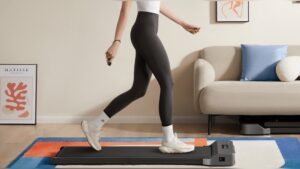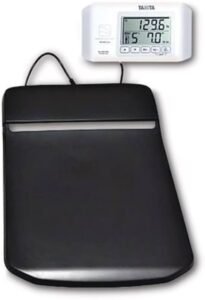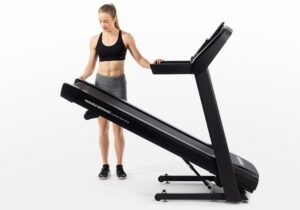Yes, Fitbits do work on treadmills by tracking steps and estimating distance traveled. They use accelerometer data to provide workout stats while you’re on a treadmill.
Tracking your fitness journey becomes seamless with a Fitbit on your wrist, especially during indoor exercises like treadmill runs. Fitbit devices, equipped with 3-axis accelerometers, measure your movement patterns to deliver real-world data, ensuring that your indoor workouts contribute to your fitness goals.
While GPS tracking is redundant indoors, your Fitbit compensates by using stride length to estimate distance and pace. Users appreciate the ease of monitoring their progress through steps counted and calories burned, making Fitbit a valuable workout companion. Whether you’re walking or running, the data synced to your Fitbit dashboard helps you analyze your performance and maintain your motivation, empowering you to achieve your health and wellness objectives.
Introduction To Fitbit And Treadmill Compatibility
Fitness enthusiasts often pair a Fitbit with a treadmill. They aim for accurate workout data. But does this combination work seamlessly? Here’s how they mesh.
Purpose Of Fitbit In Exercise Tracking
Fitbits are designed to track your fitness journey. They motivate you to reach health goals. These wearables measure steps, distance, and calorie burn during workouts.
- Steps: Fitbits count your steps, even on a treadmill.
- Distance: They estimate distance based on your step count.
- Calories: Fitbits calculate calories burned, using your activity level and personal data.
- Heart Rate: Advanced Fitbits also monitor your heart rate for a comprehensive view of your exercise intensity.
Common Treadmill Workouts And Tracking Needs
It’s crucial that your fitness tracker syncs with treadmill activities. Different treadmill workouts have unique tracking needs:
| Workout Type | Key Data |
|---|---|
| Walking | Steps, distance |
| Running | Distance, pace, calorie burn |
| Interval Training | Peak and average heart rate |
| Incline Workouts | Altitude gain, increased calorie burn |
Fitbit devices have features that allow for tracking these components. For the most accurate results, many users sync their device with the treadmill’s built-in metrics.
How Fitbit Detects Movement
Wearing a Fitbit on your wrist and stepping onto a treadmill might lead to questions about accuracy. Can it really track the steps when one’s hands are on the machine’s handles? Understanding how Fitbit’s technology works is key to getting the most out of your device during every workout.
Understanding Fitbit’s Sensors
At the heart of each Fitbit device are motion sensors. These sensors are designed to detect movement and translate it into data. The primary sensor is the 3-axis accelerometer, which measures motion in every direction. When you walk or run, this tech turns the movement into digital measurements. This is how Fitbit counts steps, measures distance, and calculates calories burned.
Differences Between Wrist And Foot Motion Detection
Fitbit traditionally rests on the wrist, which creates challenges for capturing foot movement. Wrist motion detection relies on the arm swinging naturally while walking or running. When using a treadmill, many users grip the handles, causing less wrist movement. However, Fitbit devices include algorithms designed to recognize continuous steps, even with limited arm swing. Thus, it adapts to different types of movements, including those on treadmills.
- On-wrist tracking: Monitors arm swings to count steps.
- With handles: Algorithm adjusts when arms are stationary.
Remember that the distance shown on the treadmill may not always match your Fitbit. This is due to differences in stride length and the treadmill’s calibration.
Challenges Of Tracking On A Treadmill
Many fitness enthusiasts turn to treadmills for a convenient indoor workout. Fitbits are handy gadgets for tracking progress. But, these devices sometimes fall short on treadmills. Let’s dive into why and what you can do to get accurate data from your Fitbit during indoor runs.
Why Treadmills Pose A Problem For Wearables
Tracking steps on a treadmill can confuse wearables like Fitbit. Motion sensors expect forward movement. On a treadmill, you stay in place. This may lead to skewed results, showing fewer steps and distance.
- Arms might hold onto support handles.
- Natural gait changes on a treadmill.
- Sensors are fine-tuned for outdoor walks and runs.
Strategies To Improve Treadmill Step Count Accuracy
Fortunately, there are ways to help your Fitbit understand treadmill workouts.
- Calibrate your device by walking or running outside first.
- Ensure firm wrist placement, avoiding extra tightness.
- Swing your arms naturally, even if you’re holding onto handles.
- Regularly update your Fitbit to equip it with the latest software.
Keep your Fitbit’s heart rate feature on. It aids the device in estimating your effort and adjusting step count accordingly.
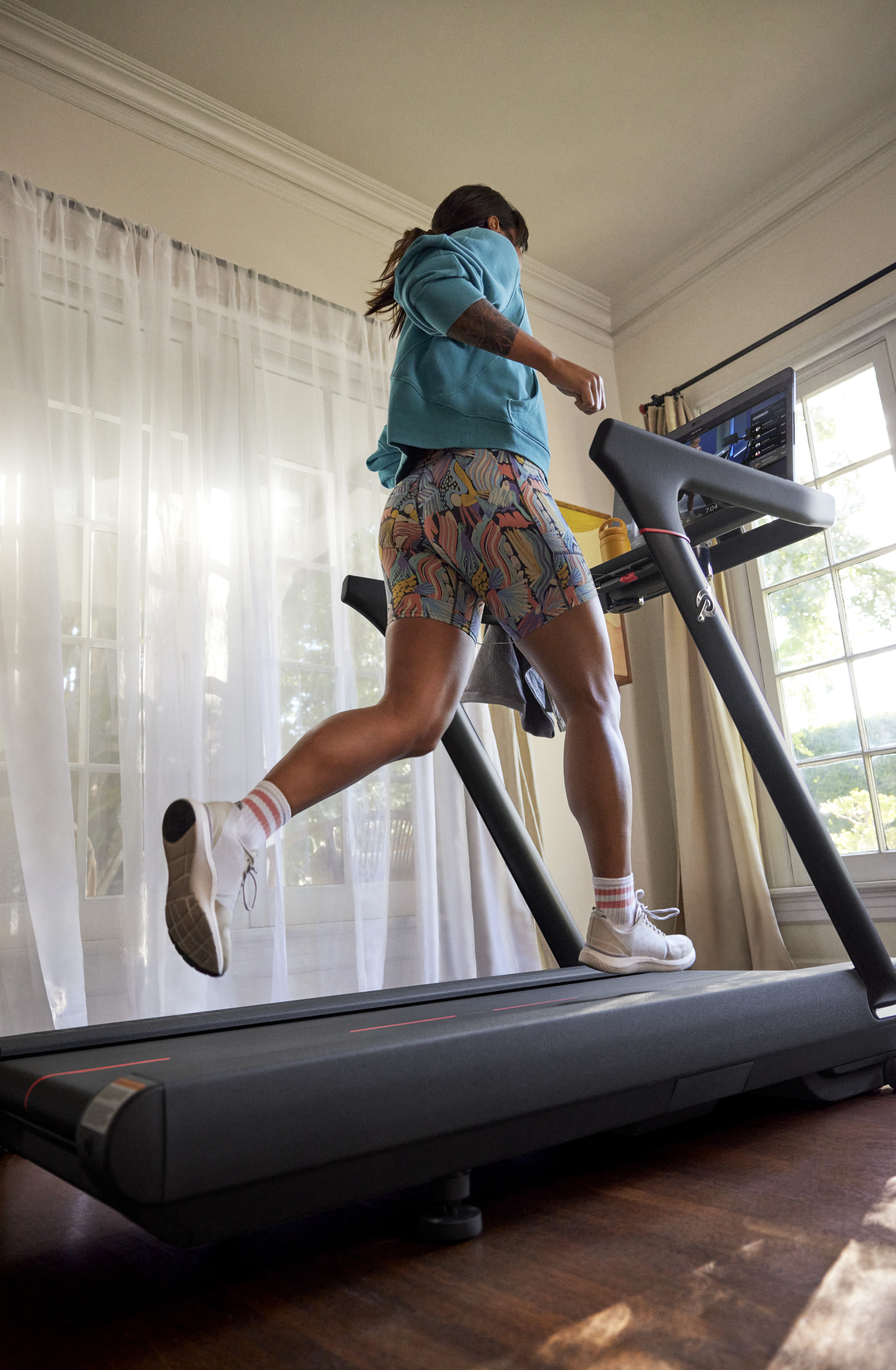
Credit: www.onepeloton.com
Optimizing Fitbit For Treadmill Runs
Many fitness enthusiasts wonder whether their Fitbit will track treadmill workouts accurately. Optimizing your Fitbit for treadmill runs is possible. You will get credit for every step and every mile. Let’s dive into how you can ensure your Fitbit works for you indoors, just as well as it does outdoors.
Calibrating Fitbit For Indoor Running
First things first, calibrate your Fitbit for indoor runs. Calibrating means setting up your device to record your steps more accurately. This can mean the difference between a near-exact tracking of your run and a guesswork result.
To calibrate your Fitbit, follow these steps:
- Wear your Fitbit on your wrist.
- Go for a run outdoors with a clear GPS signal.
- Run at your normal pace for at least 10 minutes.
- Your Fitbit uses this data to learn your stride length.
- Now, when you hop on the treadmill, your device is better equipped to estimate distance.
Utilizing The Treadmill Mode On Fitbit Devices
Many Fitbits come with a specific treadmill mode designed for indoor workouts. Turn on this feature to let your device know you’re not moving through space.
Here’s how to use the treadmill mode:
- Scroll through to ‘Exercise’ on your device.
- Select ‘Treadmill’ as your workout option.
- Start your run, and the Fitbit will keep tabs on your activity.
The treadmill mode focuses on your step count and cadence. This means it measures your performance based on the steps you take and your pace.
Alternative Tracking Methods And Accessories
Fitness enthusiasts adore their Fitbits for tracking steps and workouts. Yet, on a treadmill, steps might not register accurately. Good news: alternative methods and accessories can boost your Fitbit’s tracking abilities. From high-tech foot pods to seamless app integration, there’s a solution for precise measurement of every indoor run or walk. Let’s explore these options.
Connecting Foot Pods For Improved Accuracy
Foot pods attach to your shoes and pair with your Fitbit. They work by sensing each step on the treadmill. Here’s how they enhance your tracking experience:
- Enhanced Accuracy: Foot pods give a clearer view of steps taken.
- Easy Setup: Attach the pod, connect via Bluetooth, and start moving.
- Smart Compatibility: Most pods sync seamlessly with Fitbit devices.
Integrating Third-party Apps With Fitbit
Did you know you can connect your Fitbit to third-party apps? This lets you track all activities in one place.
- App Integration: Sync apps like Strava for a full fitness picture.
- Complete Data: Capture steps, heart rate, and more with app help.
- User-Friendly: Easy linking makes fitness tracking hassle-free.
Whether you’re using a foot pod or syncing with apps, these tools provide valuable insights. They ensure not a single step of your treadmill workout is missed. Gear up with these accessories for the ultimate indoor fitness tracking.

Credit: community.fitbit.com
User Experiences And Recommendations
Many users wonder how well Fitbit tracks activity on a treadmill.
Fitness enthusiasts love sharing their Fitbit treadmill successes.
Feedback From The Fitbit Community
Fitbit users often take to forums and social media to discuss their experiences.
- Accuracy is key: Some users report minor discrepancies between treadmill data and Fitbit.
- Step count varies: Many find step count on Fitbit matches treadmill steps closely.
- Heart rate monitoring is reliable: Heart rate tracking on Fitbit gets thumbs up from runners.
Community discussions suggest satisfaction with Fitbit’s treadmill tracking capabilities.
Best Practices For Treadmill Runners Using Fitbit
For optimal Fitbit use on a treadmill, consider these tips:
- Wear it right: Ensure your Fitbit is fastened snugly on your wrist.
- Calibrate regularly: Keep your stride length updated in Fitbit settings for accuracy.
- Manually track workouts: Use the manual track feature for precise workout details.
| Practice | Benefit |
|---|---|
| Tight wrist placement | Prevents inaccurate step counts. |
| Stride calibration | Ensures distance matches your movement. |
| Manual tracking | Improves workout specifics and history accuracy. |
Fitbit users recommend these practices for a better treadmill experience.
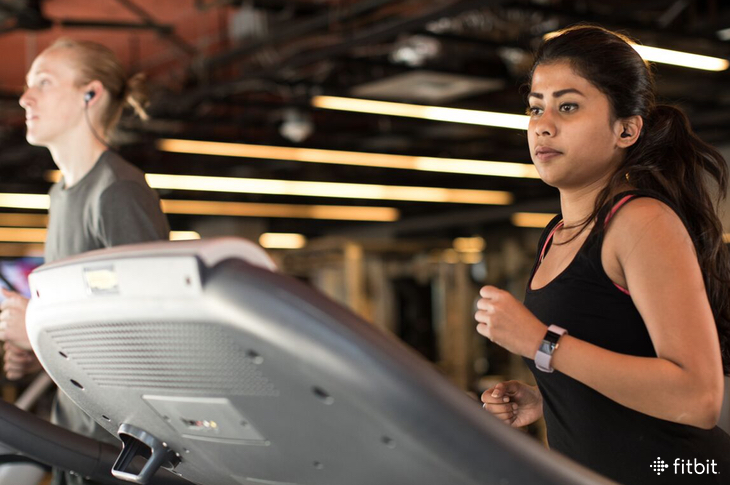
Credit: blog.fitbit.com
Frequently Asked Questions On Does Fitbit Work On Treadmill
How Do I Get My Fitbit To Work On My Treadmill?
Ensure your Fitbit is securely fastened on your wrist. Select the “Treadmill” mode, if available, before starting your workout. Sync your device post-workout to log the activity. For accuracy, calibrate your Fitbit with the treadmill’s data periodically. Keep the Fitbit app updated for optimal tracking.
Does Fitbit Track You On Treadmill?
Yes, Fitbit can track your activity on a treadmill. It uses sensors to record steps and estimate distance and calories burned.
Why Does Fitbit Not Count Steps On Treadmill?
Fitbit may not count steps on a treadmill if arm movements are limited or inconsistent. Use the device’s exercise mode for accurate tracking.
How Does Fitbit Calculate Pace On Treadmill?
Fitbit calculates pace on a treadmill by using your stride length and step count to estimate distance traveled, then dividing it by your exercise time.
Conclusion
Wrapping up, a Fitbit can indeed be a reliable companion for your treadmill workouts. As we’ve explored, ensuring proper placement and calibration maximizes accuracy. Embrace your Fitbit as a tool for tracking your progress and pushing your limits. Happy running and stepping towards your fitness goals with confidence!
